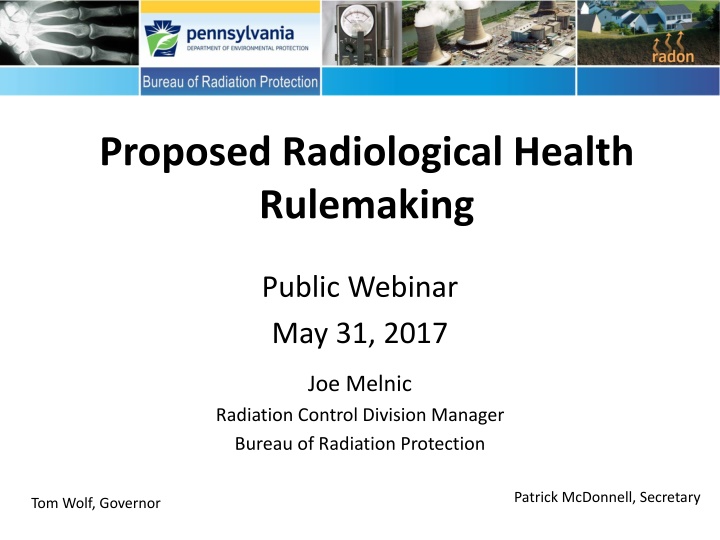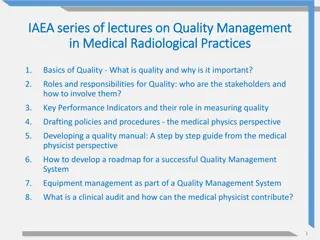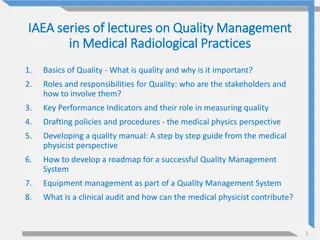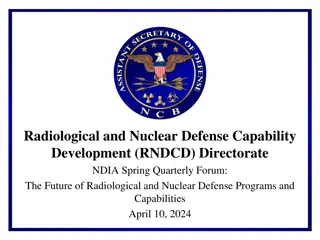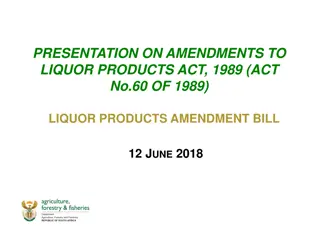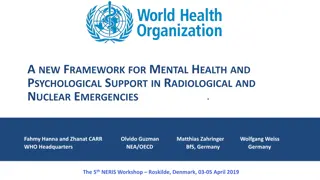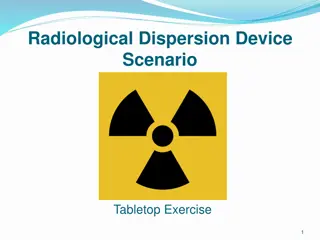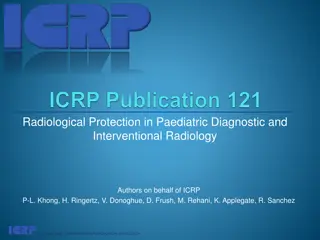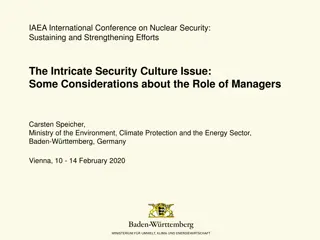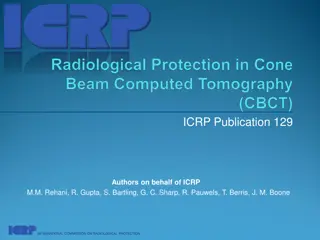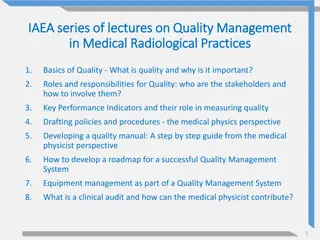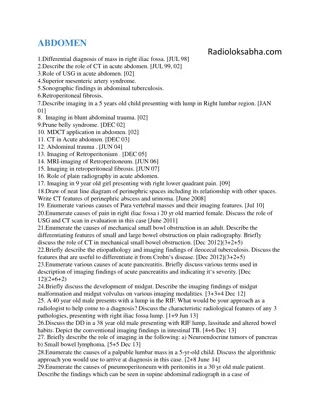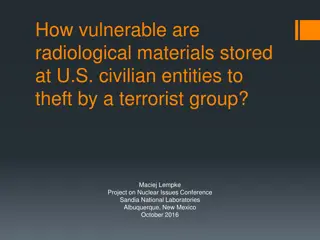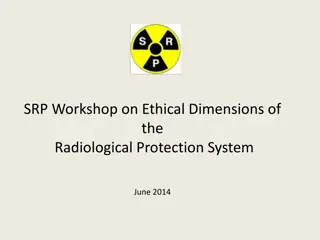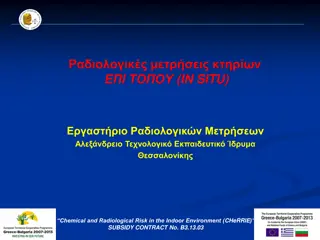Proposed Radiological Health
This content provides an overview of the proposed amendments to radiological health regulations in Pennsylvania, aiming to ensure the safe operation of radiation sources and protect public health and worker safety. Details include the background, purpose, regulations open for public comment, and specific amendments in Chapter 215 and 216.
Download Presentation

Please find below an Image/Link to download the presentation.
The content on the website is provided AS IS for your information and personal use only. It may not be sold, licensed, or shared on other websites without obtaining consent from the author.If you encounter any issues during the download, it is possible that the publisher has removed the file from their server.
You are allowed to download the files provided on this website for personal or commercial use, subject to the condition that they are used lawfully. All files are the property of their respective owners.
The content on the website is provided AS IS for your information and personal use only. It may not be sold, licensed, or shared on other websites without obtaining consent from the author.
E N D
Presentation Transcript
Proposed Radiological Health Rulemaking Public Webinar May 31, 2017 Joe Melnic Radiation Control Division Manager Bureau of Radiation Protection Patrick McDonnell, Secretary Tom Wolf, Governor
Background Radiological health regulations were last revised in 2009, after the Commonwealth became an NRC Agreement State.
Purpose The proposed amendments: Ensure that trained professionals are operating radiation sources and add clarity for the regulated community. Ensure the safety of the public and workers from the harmful effects of radiation.
Regulations Open for Public Comment Comment period: May 13, 2017 to June 26, 2017 Options for public comment: DEP s eComment site, http://www.ahs.dep.pa.gov/eComment Written comments mailed or e-mailed to DEP
Chapter 215 General Provisions 215.12 (Inspections and investigations) The proposed rulemaking would include a mechanism whereby the Department can secure or lock-down a radiation source device that is abandoned or poses a threat to public health, safety, or the environment. 215.14 (Availability of records) This section would be amended to clarify the scope of records relating to radiation sources prohibited from public access in order to protect public health, safety, and the environment. 215.22 (Prohibited uses) The proposed rulemaking would expand this section s prohibition on use of non-medical human use devices in order for the Department to determine efficacy of a procedure. 4
Chapter 215 General Provisions 215.24 (Human use) The proposed rulemaking would amend this section to apply the same X-ray operator requirements to all medical facilities for consistency throughout the regulated community. 215.31 (Granting exemptions) These amendments would add clarity and reaffirm fee requirements in order to prevent regulatory confusion.
Chapter 216 Registration 216.1 (Purpose and scope) This amendment proposes the inclusion of licensing requirements for electronic brachytherapy devices. This is a new modality that was not previously addressed in the regulations. 216.2 (Registration of radiation-producing machines) This amendment would clarify notification requirements for registrants. Specifically, a change in name was added to the notification requirements, and radiation safety officer was replaced with the individual responsible for radiation protection; a requirement was added to have a written inventory that includes the type and location of all devices; and a current schedule that includes the date and location where mobile services are to be performed.
Chapter 216 Registration 216.2a (Registration of radiation-producing machine service providers) This amendment would delete transitional language from when service provider registration went into effect, and it would exempt in-house service providers. 216.2b (Reporting and recordkeeping requirements for registered radiation-producing machine service providers) This amendment clarifies that radiation-producing machine service providers are not exempt from the radiation protection requirements in Chapter 219.
Chapter 216 Registration 216.3 (Exemptions) This amendment proposes to make electronic brachytherapy operations exempt from registration but require licensure. X-ray tubes require registration; however, when tubes are used for electronic brachytherapy a higher degree of oversight is necessary. This is due to a higher dose being administered in these procedures.
Chapter 217 Licensing of Radioactive Materials Amendments to a number of sections propose to delete the transitional language used when Pennsylvania became an Agreement State in 2008. 217.143 (Certain measuring, gauging or controlling devices) The proposed rulemaking would add three radioisotopes to this section that are not referenced by 10 CFR 31.5. The U.S. NRC unintentionally omitted these three isotopes.
Chapter 218 Fees 218.1 (Purpose and scope) This amendment would clarify that this section also applies to electronic brachytherapy license holders. Electronic brachytherapy is a new modality not previously addressed in the regulations. 218.11 (Registration, renewal of registration and license fees) This amendment would address emerging technologies and include a fee for electronic brachytherapy devices at $1,000 annually for the first unit (controller) at a facility and $100 for each additional unit at that facility. 218.11a (Special provisions for calculating fees during Agreement State transition period) The proposed rulemaking would delete this obsolete section.
Chapter 219: Standards for Protection Against Radiation 219.3 (Definitions) The proposed rulemaking would clarify the medical reportable event definition for radiation-producing machine therapy by including actual criteria. A new definition is added for medical reportable events involving radiation-producing diagnostic or interventional X-ray procedures. 219.6 (Effects of incorporation of 10 CFR Part 20) This amendment would exempt the Radiation Exposure Information and Reporting System (REIRS) requirement. The REIRS requirement remains the responsibility of the U.S. NRC.
Chapter 219- Standards for Protection Against Radiation 219.229 (Other medical reports) The proposed rulemaking would include additional requirements for reporting medical events. Such as interventional radiology, a modality not previously addressed in the regulations.
Chapter 220 Notices, Instructions, and Reports to Workers 220.10 (Effects of incorporation of 10 CFR Part 19) This amendment would delete transitional language that is obsolete.
Chapter 221 X-Rays in the Healing Arts 221.1 (Purpose and scope) This amendment would include licensee in the scope. 221.2 (Definitions) The proposed rulemaking would add definitions to support the addition of terms noted in 218.11 through 221.205.
Chapter 221 X-Rays in the Healing Arts 221.11 (Registrant responsibilities) The proposed rulemaking would clarify continuing education requirements and expand the quality assurance program. This includes clarifying how often continuing education should occur, and adding diagnostic reference levels; image quality; and, artifacts to be addressed by the quality assurance programs. 221.16 (Training, competency and continuing education) This proposed section would add specific training for X-ray operations, competency in the operation, and continuing education requirements for registrants and licensees.
Chapter 221 X-Rays in the Healing Arts 221.21 (Diagnostic equipment requirements) This amendment would require that new equipment comply with FDA requirements, which will prevent any business, foreign or domestic, from selling non-certified devices. 221.25 (Beam quality) The proposed rulemaking would update Table II, X-ray tube voltage, to current FDA standards.
Chapter 221 X-Rays in the Healing Arts Chapter 221 X-Rays in the Healing Arts 221.35a (Fluoroscopic X-ray systems) The proposed rulemaking would limit who can operate a fluoroscopic X-ray system for clinical purposes to licensed practitioners; radiologist assistants; registered technologists; and students-in-training. The amendment adds equipment evaluations such as entrance exposure rates; maximum air kerma rates; and high contrast resolutions. The amendment adds requirements for fluoroscopic-guided interventional procedures, such as written procedures; records of policies and procedures; radiation output; and, peak skin dose. 221.57 (Facilities using CR or DR) This new section would add quality control program requirements for the relatively new imaging methods of computed radiography (CR) and digital radiography (DR).
Chapter 221 X-Rays in the Healing Arts 221.61 (Radiation therapy simulation systems) The proposed rulemaking would clarify the oversight requirements for simulation systems. Requirements for simulation systems are not as arduous as diagnostic systems, therefore, these systems only need to comply with certain radiological health regulations. 221.63 (Therapy imaging guidance systems) This new section would add technical requirements for procedures using this new type of guidance system, such as quality control procedures and methods addressing radiation safety.
Chapter 221 X-Rays in the Healing Arts 221.64 (CBCT) This new section would add quality control and evaluation requirements for cone beam computed tomography (CBCT) in order to address radiation safety. Radiation measurements for these units must be evaluated annually, and as soon as practical following any component repair. The operator shall have instructions on performing routine quality control. 221.65 (X-ray attenuation systems) This new section would clarify the restrictions needed for this type of computed tomography (CT) system. These systems function differently than diagnostic systems and are required only to comply with 221.202- 221.205 unless they are exempted by other means.
Chapter 221 X-Rays in the Healing Arts 221.71 (Equipment requirements) This amendment would clarify the requirements that apply to electronic brachytherapy. This is a new modality previously not addressed in the regulations and are exempt from certain equipment requirements. 221.201 (Definitions) The proposed rulemaking would add eight definitions applicable to CT X-ray systems. 221.202 (Equipment requirements) The proposed rulemaking would require accreditation of all diagnostic CT X- ray systems, and safety information necessary for these potentially high-risk systems be maintained and readily accessible to the operators in order to address radiation safety.
Chapter 221 X-Rays in the Healing Arts 221.204 (Performance evaluations, routine QC and surveys) This amendment would delete obsolete requirements and add performance evaluation requirements for CT X-ray systems to be performed by or under the direction of a QMP; changing performance evaluation procedures to routine quality control procedures; and adding requirements for radiation protection survey and records management in order to address radiation safety. 221.205 (Operating procedures) The proposed rulemaking would add the requirement for operators to be appropriately trained in the specific techniques and modalities they will be utilizing.
Chapter 223 Veterinary Medicine 223.1 (Purpose and scope) The proposed rulemaking would clarify that these safety requirements also apply to radiation sources being used in research on animals. 223.22 (Sealed and unsealed sources) This amendment would add unsealed sources to the scope of this section because unsealed sources are now being used in animal therapy.
Chapter 223 Veterinary Medicine 223.31 (Registrant responsibilities) This new section would add responsibilities of the registrant, including responsibilities such as adequate instruction, written safety procedures, a quality assurance program, and continuing education in order to satisfy radiation safety requirements.
Chapter 225 Radiation Safety Requirements for Industrial Radiographic Operations 225.3a (Effect of incorporation of 10 CFR Part 34) The proposed rulemaking would delete obsolete transitional language. 225.4a (Radiation safety program) The proposed rulemaking would add monitoring report requirements. These are individual monitoring reports required by 10 CFR 20.2206(a)(2).
Chapter 225 Radiation Safety Requirements for Industrial Radiographic Operations 225.81 (Permanent radiographic installations) This amendment would rectify an incorrect reference to 10 CFR 34.52 and require that records of tests performed for permanent radiographic installations be retained for five years as opposed to the current three years.
Chapter 227 Radiation Safety Requirements for Analytical X-ray Equipment, etc. 227.11a (Equipment requirements) This amendment would add requirements for hand-held devices in new subsection (i) in order to address radiation safety. This is a new modality not previously addressed in the regulations.
Chapter 228 Radiation Safety Requirements for Particle Accelerators 228.11a (Licensee responsibilities) The proposed rulemaking would add qualification requirements for operators of accelerators used in the healing arts in order to address radiation safety. This includes operators who need additional instruction including certification in the applicable specialty. 228.21a (Notification and license requirements) This amendment would delete an outdated requirement and increase the time in which to file an application for a specific license from 30 to 90 days after the initial order is issued to obtain any or all parts of an accelerator.
Chapter 228 Radiation Safety Requirements for Particle Accelerators 228.35 (Operating procedures) The proposed rulemaking would reduce the requirement for testing interlocks from quarterly to annually. The proposed rulemaking would also require records to be maintained for five years instead of the current four years. In addition, paragraph (g)(5) would be renumbered as subsection (h) and clarifies that the subsection refers to both medical and non-medical accelerator operations.
Chapter 228 Radiation Safety Requirements for Particle Accelerators Chapter 228 Radiation Safety Requirements for Particle Accelerators 228.36 (Radiation monitoring requirements) The proposed rulemaking would change this annual check to daily testing to reflect current industry practice. 228.61 (Leakage radiation to the patient area) This amendment changes Existing Equipment to Equipment manufactured or installed prior to July 17, 2004, must meet . And changes shall to must . 228.72 (Selection of radiation type) This amendment would clarify that the section refers to devices capable of X-ray therapy or electron therapy, or both.
Chapter 228 Radiation Safety Requirements for Particle Accelerators 228.73 (Selection of stationary beam therapy or moving beam therapy) This amendment would clarify that the section refers to devices capable of stationary beam therapy, or moving beam therapy, or both. 228.75 (Calibrations) The proposed rulemaking would include the addition of Flattening Filter Free (FFF) mode for calibration of a therapy beam.
Chapter 230 Packaging and Transportation of Radioactive Materials 230.15 (Transportation of unlicensed material) The proposed rulemaking would add a new section to address unlicensed material, such as TENORM, and the requirement to adhere to US Department of Transportation regulations.
Summary Updating the radiological health regulations is vital for the medical and industrial communities. With continuous advancements in technology, continuing education and strengthened controls will ensure that public health and safety are protected.
Outreach DEP and the Radiation Protection Advisory Committee (RPAC) worked together since 2014 to develop the proposed amendments.
Thank you. Questions? Joe Melnic, Radiation Control Division Chief 717-783-9730 jmelnic@pa.gov 35
